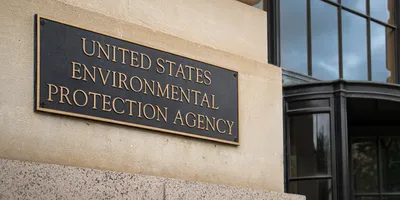The US Environmental Protection Agency (EPA) has issued another delay to the effective date of the Toxic Substances Control Act (TSCA) section 6(g) exemption requirements for trichloroethylene (TCE). These provisions will now take effect on February 17, 2026, extending the transition window for laboratories with essential-use allowances or ongoing contamination analysis workflows. This update follows a series of court actions that temporarily stayed portions of the final rule and required EPA to align its administrative timeline with ongoing judicial review.
TCE is a volatile organic compound historically used across industrial, commercial, and some laboratory processes. While most TCE uses were prohibited under the 2024 final rule, certain specialized applications—particularly cleanup, environmental testing, and essential laboratory analysis—are permitted under extended or exempted timelines when strict worker protections are in place.
EPA postpones exemption requirements
EPA finalized a broad prohibition on TCE manufacturing, processing, and distribution in December 2024, with most uses originally scheduled for phaseout by September 15, 2025. Multiple petitions for review led to a temporary stay of the rule’s effective date. In March 2025, the court lifted that stay for most rule provisions, leaving the section 6(g) exemptions temporarily paused.
EPA previously moved the effective date for these exemptions to November 17, 2025. The agency has now aligned the timeline with the court’s schedule by postponing the effective date to February 17, 2026. This change affects only the specific exemption requirements; all other TCE prohibitions and phaseout dates remain in force.
What the TCE rule covers
Under the final rule, EPA prohibits most TCE uses, including manufacturing and processing for commercial and consumer products. A limited number of industrial applications—such as cleaning aerospace or medical device components, refrigerant manufacturing, and battery separator production—are permitted under longer phaseout periods. These uses require stringent worker protections, including workplace chemical protection plans and adherence to an inhalation exposure limit intended to reduce long-term exposure by an estimated 97 percent.
For laboratory settings, EPA allows essential lab use of TCE to support cleanup activities at contamination sites. This includes activities tied to Superfund or legacy remediation projects. Essential laboratory use and disposal of TCE wastewater may continue for up to 50 years when worker protections are in place, including the airborne concentration limit defined in the final rule.
Implications for laboratory leaders
This delay does not alter the overall prohibition on TCE but does shift the operational timeline for labs that still rely on TCE for legally permitted work. Lab managers may need to:
- Update compliance calendars to reflect the February 2026 effective date
- Coordinate with EHS teams to confirm worker protection measures align with current requirements
- Review chemical inventories and procurement plans, especially if analytical workflows still involve TCE
- Validate alternative solvents or workflows ahead of longer-term phaseouts
- Communicate with vendors on the availability of TCE and related consumables during the transition period
For labs conducting environmental testing or supporting remediation projects, the essential-use provisions remain in effect and continue to require adherence to exposure limits and safe handling procedures.
Operational takeaways for lab managers
For most laboratory environments, the TCE prohibition has already limited or eliminated routine use of the solvent. However, for labs involved in contamination analysis, legacy remediation work, or workflows temporarily covered under section 6(g) exemptions, this revised timeline affects planning, procurement, and compliance. This update offers additional runway to refine worker protections, validate replacements, and coordinate with regulatory affairs teams. Monitoring future EPA actions—and the outcome of ongoing court proceedings—will remain important for labs handling regulated chemicals under TSCA.
This article was created with the assistance of Generative AI and has undergone editorial review before publishing.












